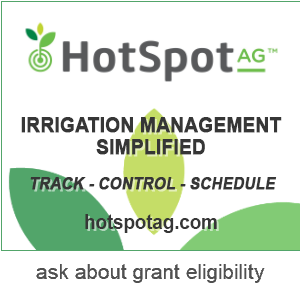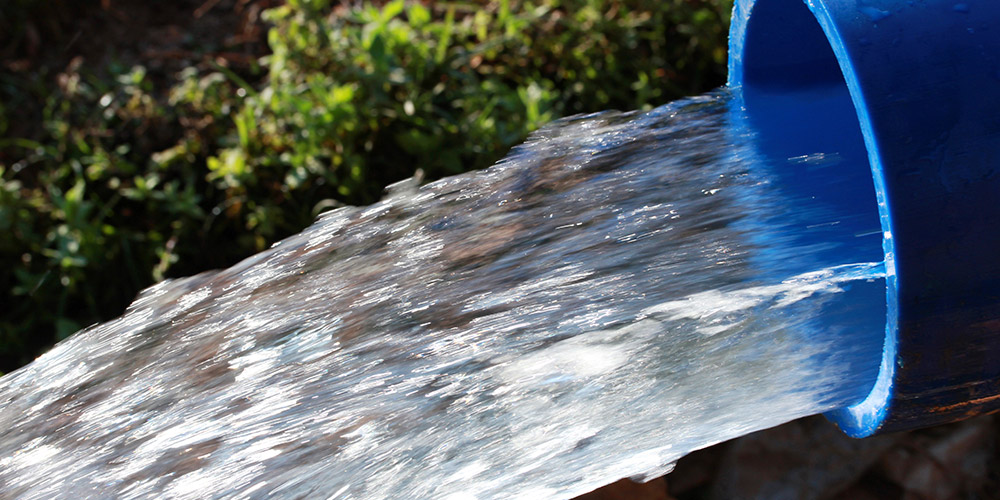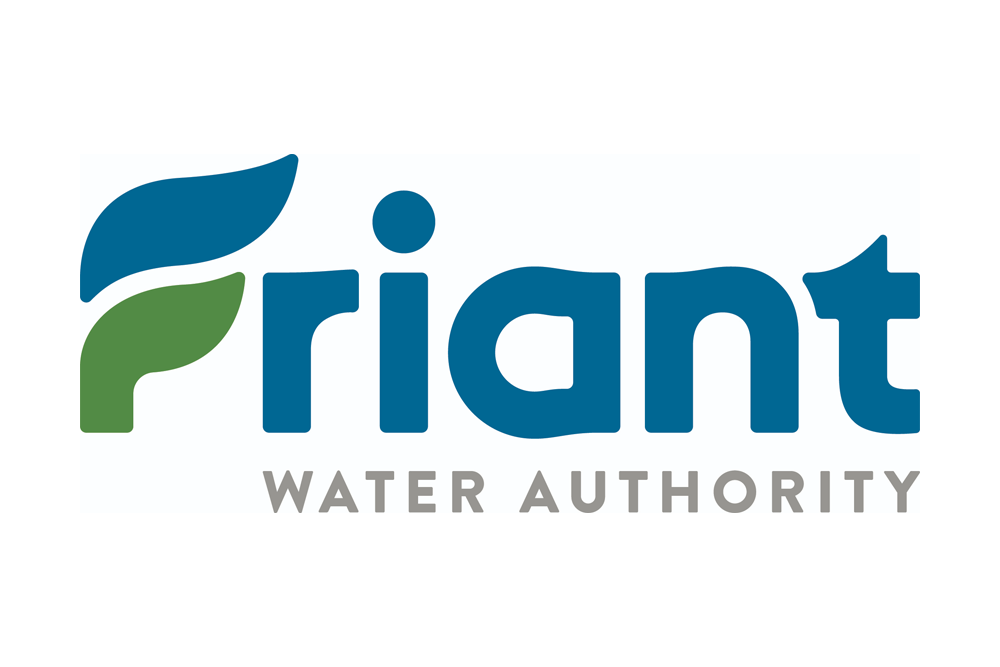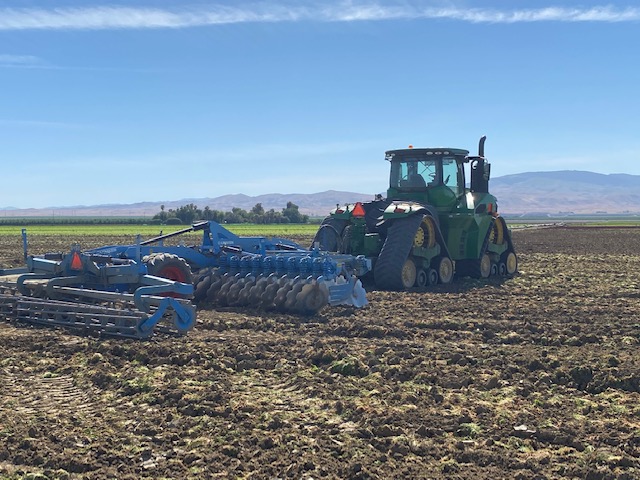Madera County Supervisor Leticia Gonzalez called to order the monthly committee meeting of the Madera GSA at 1:30 p.m. on July 1, 2025 in the supervisor chambers of the County Government Center on 4th Street. After the Pledge, there was no public comment in person or online and the minutes of the June 3rd meeting were approved, with the support of the other committee member, Supervisor Robert Macaulay.
The agenda called for presentations by firms that had responded to the RFP (request for proposals) put out on May 15. Stephanie Anagnoson, county director of water and natural resources, provided some background, explaining first that no action was needed at this meeting today. She reminded the group that the GSA allows measurement of water use for irrigated acres by two satellite systems or meters. The county’s contract with the satellite providers ends this year, which triggered the need for the RFP.
Staff had responded to some 30 questions about the RFP requirements and seven proposals had been received from firms that provide measurement and / or accounting packages. Representatives from each were present and were allowed seven minutes each to introduce their firm and the services to be provided. The full proposals as submitted are included in the information packet for this meeting and are available on the department’s website. Also, the presentations made here included PowerPoint slides also on the site.
Anagnoson explained that there would not be any direct dialogue with the presenters at this meeting. Instead, written questions were invited which would be submitted to the companies with their answers posted online by the end of July. Also, a questionnaire will be sent to growers asking for their preferences. A staff recommendation will be brought back to the committee in September.
With both the proposals and presentations as well as the video recording of this meeting itself available online, we’ll offer here just a few brief notes from each presenter.
Responding Firms
Leading off was Brett Blom, vice president of business development for Hydrosat, the company which had purchased Irriwatch, one of the two systems contracted for use in the county. He said he lives in the Modesto area where his family farms almonds. He said his company has two of its own satellites in orbit, working in 60 countries with 160 crops globally. He said his firm has appreciated the opportunity to work in Madera County and has benefitted from the feedback provided by growers.
Speaking for Land IQ, Joel Kimmelshue said his firm has been in business 18 years merging agronomics and spatial sciences – land and sky. He said the firm works with 40 GSAs in the South Valley using ground stations to provide ETAW on a field by field basis monthly and daily.
John Burns of Environmental Science Associates said the group he’s working with – California Water Data Consortium – will provide an accounting platform that is “scalable, adaptable and ready to use.” Built around open source software, it is in use in Kansas and Nebraska as well as in 300 GSAs in California.
4Creeks, Inc., with its “Basinsafe” accounting platform is working with six GSAs and four irrigation districts, reported Victor Lopez. He said the Visalia based firm has over 200 employees and the Madera work would be led by David DeGroot, P.E., the firm’s principal in charge.
John Davids of Davids Engineering is a familiar figure here since the firm has developed GSPs, revisions and annual reviews for the GSAs across the county as well as the Madera GSA allocation system. He introduced his brother, Jeffrey Davids, PhD, P.E. who would be the project manager and who presented the overview of the accounting platform they offer.
Robert Cima presented for MLJ Environmental, the 18-year-old firm he said has been building software in this space for ten years. Its Watermark accounting platform would be “producer facing,” and able to work with any data collection system, sorting by crop and parcel, applying all existing allocation rules and calculating credits, penalties and remaining balances. Cima would be the project manager if his firm is selected.
Concluding the presentations, Scott Steinbeck spoke for United Water Track Systems and its water dashboard accounting platform. He said his firm has been in the agricultural industry for 40 years and built its system specifically to held landowners respond to SGMA. He said they serve over 6000 grower accounts with over 500,000 regulated acres.
Supervisor Gonzalez thank all for their presentations and opened the meeting for public comment. Devin Aviles began, saying he was representing MAWA, since Noah Lopez was not able to attend. He said MAWA members believe he accounting platforms are critical since many growers are using meters, not satellite measurement. He said as allocations decrease and more folks are challenged, the water accounting capabilities will be critical. He said MAWA members are available to work with vendors as they might have questions.
Grower Mark Peters said the process had started with a search for an ETAW provider but now accounting capabilities have been included. He said they might be used by some, but the measurement system will be used by many.
Supervisor Macaulay asked for a review of the feedback process. Anagnoson said that people here can leave questions and questions can be emailed to the office. These will be given to the potential vendors whose replies will be posted online. Also, a questionnaire will be mailed to all growers asking for their opinions and preferences on both the satellite measurement services and the accounting packages. They will be able to indicate that they don’t want to use either satellite or the accounting components, instead relying on their certified meters. There will be an update at the August committee meeting and a staff recommendation presented in September.
A person online, Karen, had a question but there was a technical problem that did not allow her to be heard. So, at 2:40 p.m., Gonzalez recessed the meeting for 10 minutes and the group was invited to enjoy cake which had bee prepared “in honor” of the Chowchilla Subbasin being restored to DWR oversight by the State Board, a happy circumstance.
Returning to session, a person whose name we did not get, said that he had spoken with Karen and posed her question, asking for any studies that related to the accuracy of the satellite measurement systems.
Domestic Well Mitigation
The next agenda item called for action to set the revised fee in the GSA for its share of the domestic well mitigation program. Anagnoson began her presentation by introducing online Kevin Kostiuck of Raftelis, the consulting firm that had produced the rate study for all the possible programs contemplated before the injunction had stopped the $246/acre fee. She explained that the cost of only the domestic well program had been determined to be $67 per enrolled acre based on a cost of $35,000 per well and the 247 de-watered wells being assisted by Self Help Enterprises and the estimated 601 wells estimated to go dry by 2030.
possible programs contemplated before the injunction had stopped the $246/acre fee. She explained that the cost of only the domestic well program had been determined to be $67 per enrolled acre based on a cost of $35,000 per well and the 247 de-watered wells being assisted by Self Help Enterprises and the estimated 601 wells estimated to go dry by 2030.
She posed and answered the question, “Why mitigation?” She said that by providing mitigation, the continued access to transition water is allowed because wells will be protected. The seven GSAs in the subbasin each meet their share, but with no fee, there is no mitigation. She said agriculture is paying the cost because agriculture uses 93 percent of the groundwater in the subbasin. Madera GSA’s share is 73 percent based on acreage among the GSAs.
Regarding the question of using penalties collected from those exceeding their allocation, she said if all the collections were applied, it would reduce the amount needed by about ten percent, so penalties are not sufficient to fund the DWM program.
On the question of an opt-out possibility for landowners only using their sustainable yield water at six inches per year and no transition water, there are only five farms in the GSA that would fit that criteria. That also raises the question if that land use changed or if property was sold and water usage increased by a new owner. The proposed resolution would allow an op-out, though, for farm units using only sustainable yield at six inches for the past ten years.
To give credit for the funds collected for penalties in the Madera Subbasin, County GSA so far, two new rates are proposed in the resolution: $65/acre in the current fiscal year using an averaged rate over three years (consistent with the approach of the rate study) or $59/acre in the current fiscal year using an unaveraged rate; rates in the second and third year would initially increase to $67/acre and $69/acre respectively, but would be reevaluated and reduced based on penalties collected in the prior year.
The staff recommendation is to bring this resolution to the supervisors at the July 15 meeting. (Again, the full text of the proposed resolution is contained in the packet for this meeting found online.)
Public comment was invited, and Mark Peters came to the microphone saying he had no argument with the $35,000 per well or the 73 percent share for the Madera GSA. He did say he had found examples of DWR approving plans that did not provide for the full cost of well replacement. He also said he had found statements online that at $30,000 per well, Chowchilla has one of the highest rates of reimbursement. DWR is approving plans with less than 100 percent reimbursement, he said. He said he also wanted to point out that keeping a fee in place for five years would be a mistake in light of the unknowns around the collection of penalties.
Erik Rodriguez, UC small farm SGMA adviser, asked about how small dual use wells – used for drinking and farming – would be handled. Is there an interim solution for the dry well owner in this instance?
Craig Roberts, who spoke last month about his use of only sustainable yield water, asked if that six-inch amount would be applied to all land in the farm unit.
Aviles said MAWA supports the mitigation program but wants it declared that all penalty amounts (for exceeding allocation) be applied to that funding. He said his group would like an annual review of rates along with number of wells and their costs. He said MAWA does not support an opt-out clause.
Michelle Lascoigty said she was concerned about the definition of what qualifies as a domestic well that needs mitigation. She said old wells are different from new wells and they all need maintenance work that should be done by the owner.
Saying he was speaking for the Iest and Deipersloot families, dairy farmers on the west side of the county, Brad Samuelson said they support the DWM program and fee but it’s always important to determine the situation with individual wells.
Anagnoson commented that it’s a chicken and egg situation… if there is no funding source, why develop rules? She said the average cost of $35,000 has been determined to cover the cost of drilling and well casing but not pumps.
With no further comments, Gonzalez called for the motion which she and Macaulay approved, sending the draft resolution on to the full board with recommendation for approval.
And finally, it was noted by Assistant Director Jeannie Habben that under an emergency order during the drought the Governor had required that GSAs certify new and renovated wells. But in September, 2024 GSAs were relieved of that requirement. The final item of business was approval of a resolution reinstating the county’s oversight of new wells. This resolution will also go to the full board.
Delivering the staff report, Anagnoson restated the fact that the Chowchilla Subbasin GSP revisions had met with approval from the State Board who returned the unit to the control of the DWR. She also said a compilation of the rules regarding the GSAs allocation program had been mailed to landowners.
The meeting was adjourned at 3:45 p.m.
DISCLAIMER OF RESPONSIBILITY; Waterwrights strives to provide clients with the most complete, up-to-date, and accurate information available. Nevertheless, Waterwrights does not serve as a guarantor of the accuracy or completeness of the information provided, and specifically disclaims any and all responsibility for information that is not accurate, up-to-date, or complete. Waterwrights’ clients therefore rely on the accuracy, completeness and timeliness of information from Waterwrights entirely at their own risk. The opinions expressed in this report are those of the author and do not represent any advertisers or third parties.
and specifically disclaims any and all responsibility for information that is not accurate, up-to-date, or complete. Waterwrights’ clients therefore rely on the accuracy, completeness and timeliness of information from Waterwrights entirely at their own risk. The opinions expressed in this report are those of the author and do not represent any advertisers or third parties.
ALL RIGHTS RESERVED. Copyright 2025 by WaterWrights.net
Madera County is comprised of three subbasins, designated by the CA Department of Water Resources as critically overdrafted, and “high priority”: (1) the Chowchilla Subbasin; (2) the Madera Subbasin; and (3) a portion of the Delta-Mendota Subbasin. Each of these subbasins submitted a Groundwater Sustainability Plan (GSP) by January 31, 2020. These subbasins are required to achieve “sustainability” by the year 2040. The method by which sustainability will be achieved will be illustrated in the GSP, which was be drafted in partnership by the irrigation district, water districts, cities and Madera County. The Madera County Groundwater Sustainability Agency (GSA) is administered by the Madera County Department of Water and Natural Resources: Stephanie Anagnoson, Director, 200 W. Fourth Street, Madera, CA 93637, (559) 675-7703 x. 2265 or (559) 675-6573. The County of Madera Board of Supervisors is the Board of Directors of the GSA for the three subbasins. The current board is composed of five members: Leticia Gonzalez, Robert Macaulay, Robert Poythress, David Rogers and Jordon Wamhoff..
The Madera Subbasin’s DWR # is 5-022.06

































